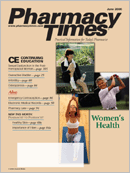Making Tough Choices
In a recent commentary, I suggested that current and future pharmacy practitioners needed to develop skills and gain experience in ethical decision making. I cannot imagine more difficult decisions to make than prescribing drug therapy based on health care financing parameters. This inevitability is even more frightening since implementation, even if institutional or societal guidelines are developed, will take place at the bedside between patient and provider. Will my staff and I be prepared (or willing) to inform a 70-year-old friend that he cannot receive a specific chemotherapeutic agent because its relative value does not meet our guidelines for use?
Before we are forced to "ration" drugs, pharmacy leaders will have many more tough choices to make, including:
- Is the annual cost of automation and information technology more valuable than restricted drug availability?
- Is specialization of pharmacist practitioners, whose practice focuses on smaller populations, worth maintaining?
- Can all distributive functions be accomplished by pharmacy technicians?
- Should resource-intensive patient safety programs be continued?
- Can hospitals continue to serve as educational hubs for future pharmacy practitioners?
This is just a short list of many questions that we must be prepared to answer. Answers should be derived with the same evidence-based objectivity and rigor as when a new drug is considered for formulary availability in our hospitals. How will relative value be determined? Will these decisions be made locally, regionally, or nationally? Which constituencies should be included in these deliberations?
I don't know about most readers, but I am not skilled at assessing relative value. Let's use automation as an example of the challenges we could face. My hospital pays more than $1 million annually to lease the automation we use. Typically, if a nurse or pharmacist were asked what would happen if the automation was eliminated, the response would be, "Add more staff." Let's presume that adding staff was not an option. Let's also presume that a cure for cystic fibrosis was discovered, but it would cost the hospital $1.5 million annually and not be reimbursable. Should we retain the automation for the staff and all the patients it supports? Or should we cure the children and ask all the pharmacy and nursing staff to take an aggregated $1.5-million pay cut?
It seems to me that technology vendors should begin funding research that objectively determines "value" without influence from their sales and marketing divisions. Providers need education about determining relative value and need to begin to develop tools that will help measure value. Finally, processes should be planned in each organization for such debates, and, ultimately, decisions must be made on all these issues. We do, indeed, have tough choices to make in the future.
Mr. McAllister is director of pharmacy at University of North Carolina (UNC) Hospitals and Clinics and associate dean for clinical affairs at UNC School of Pharmacy, Chapel Hill.

